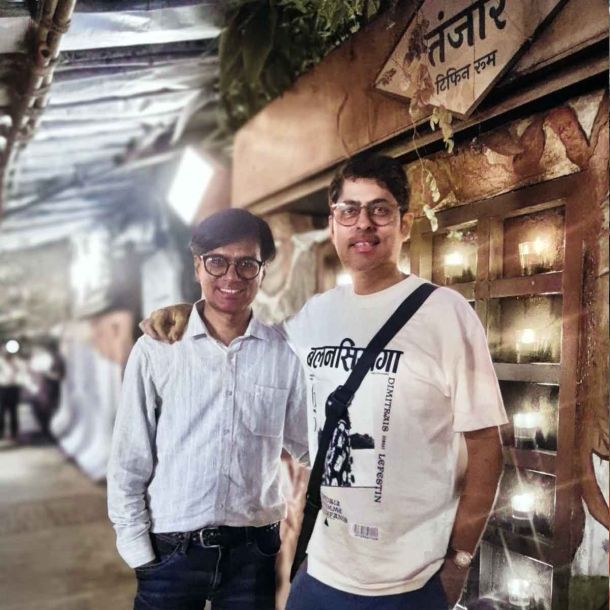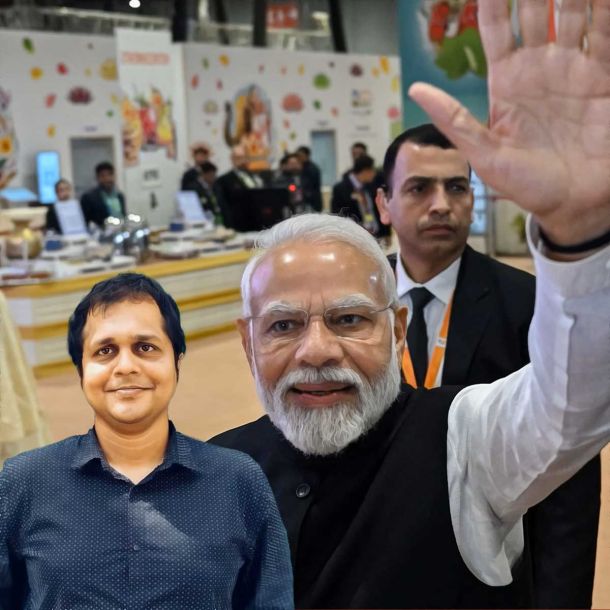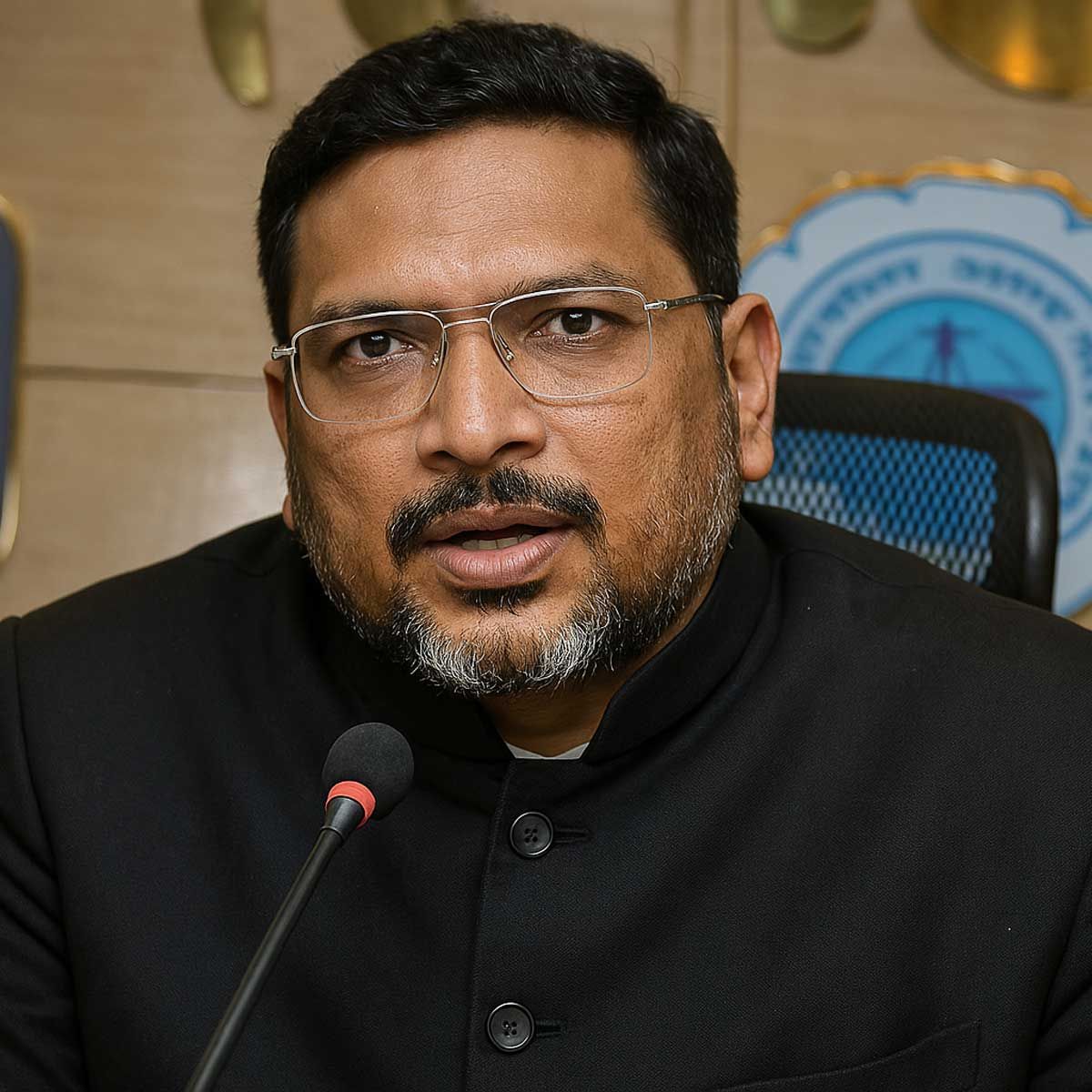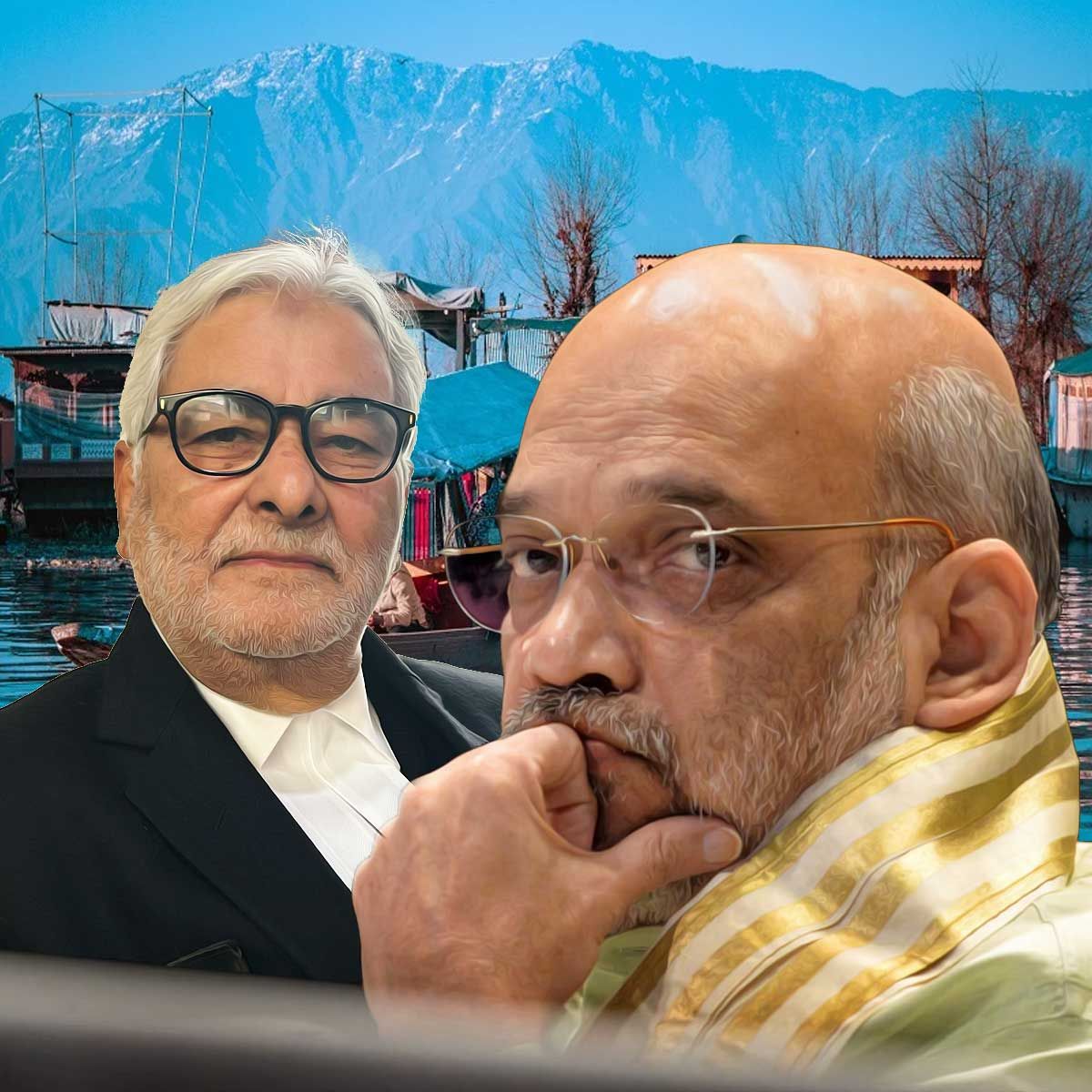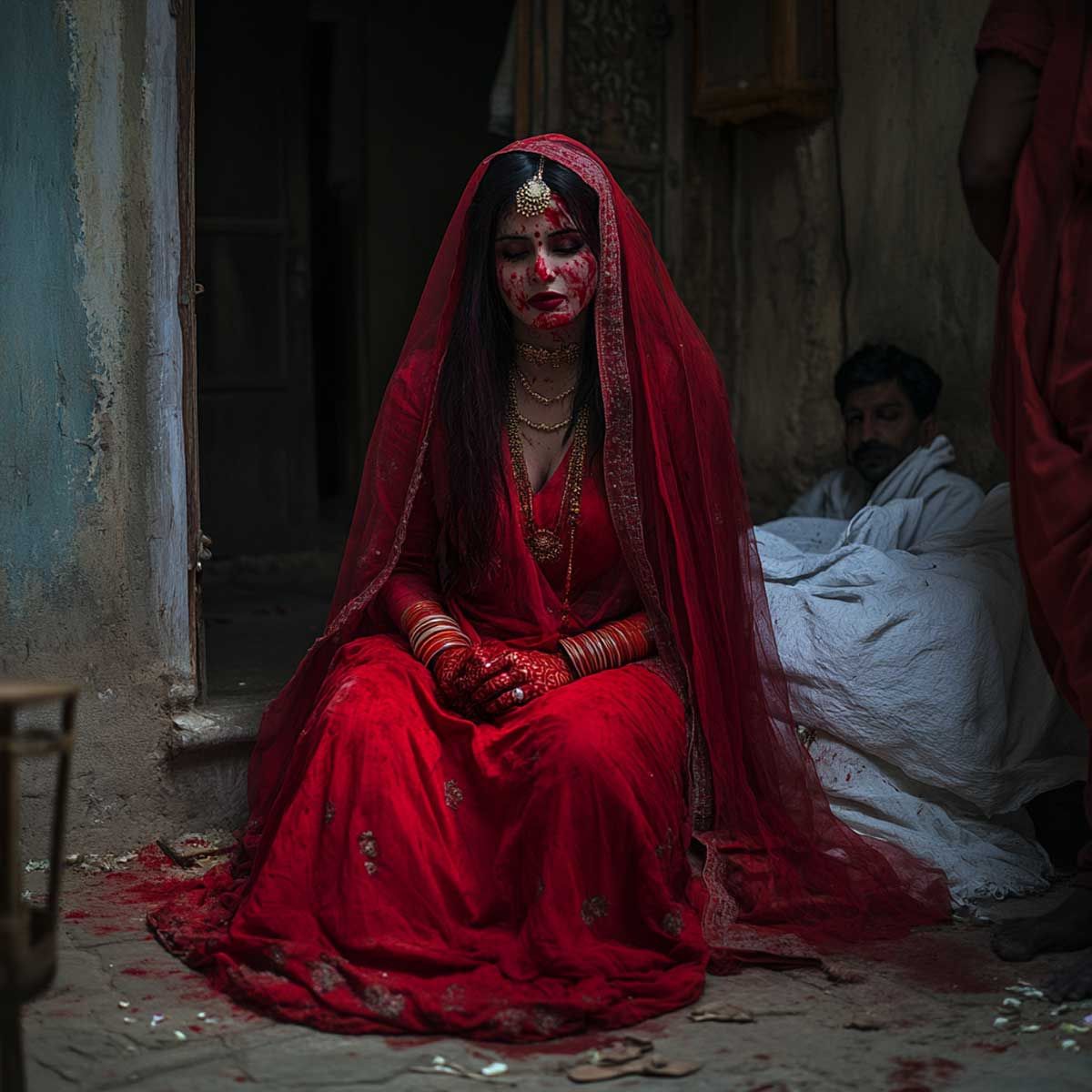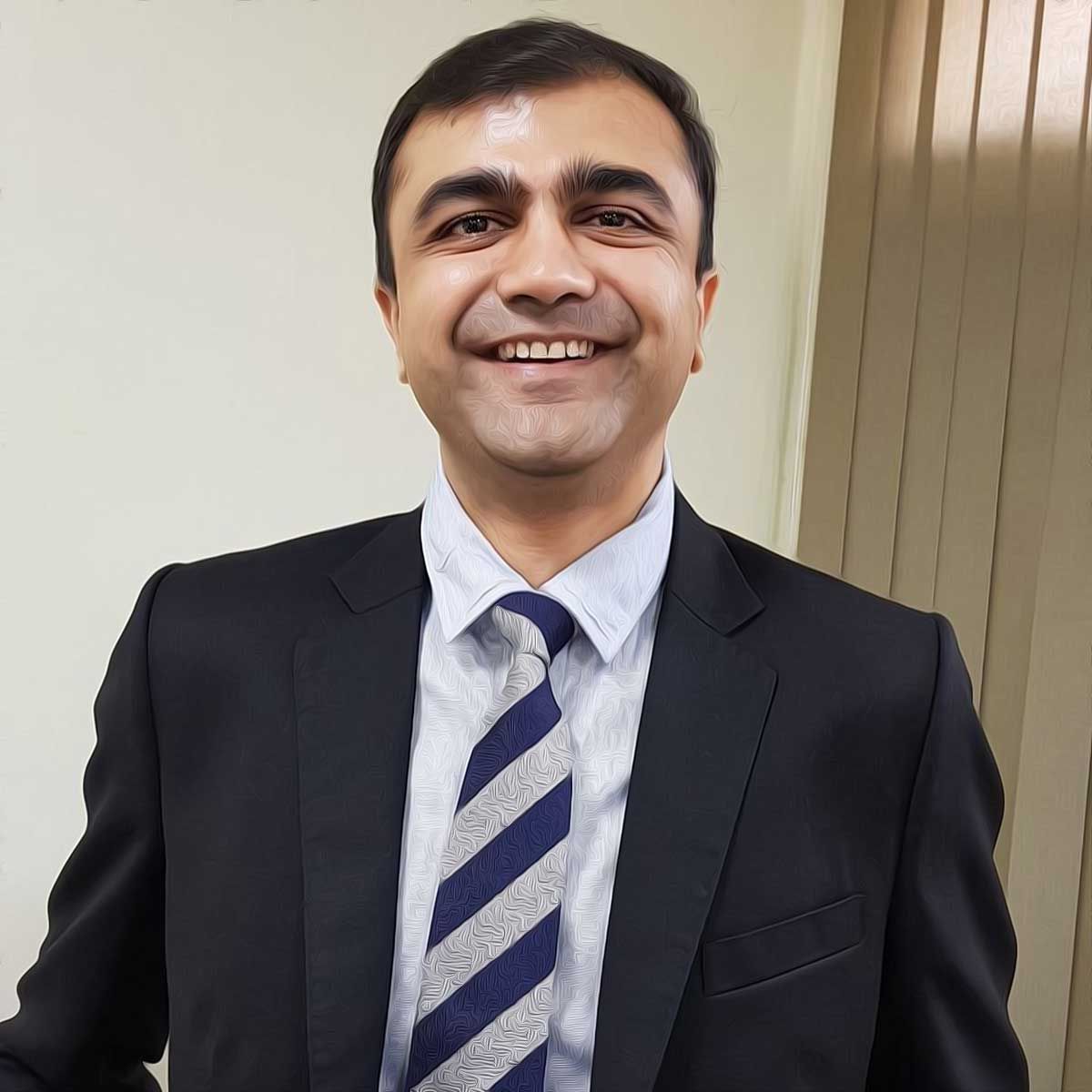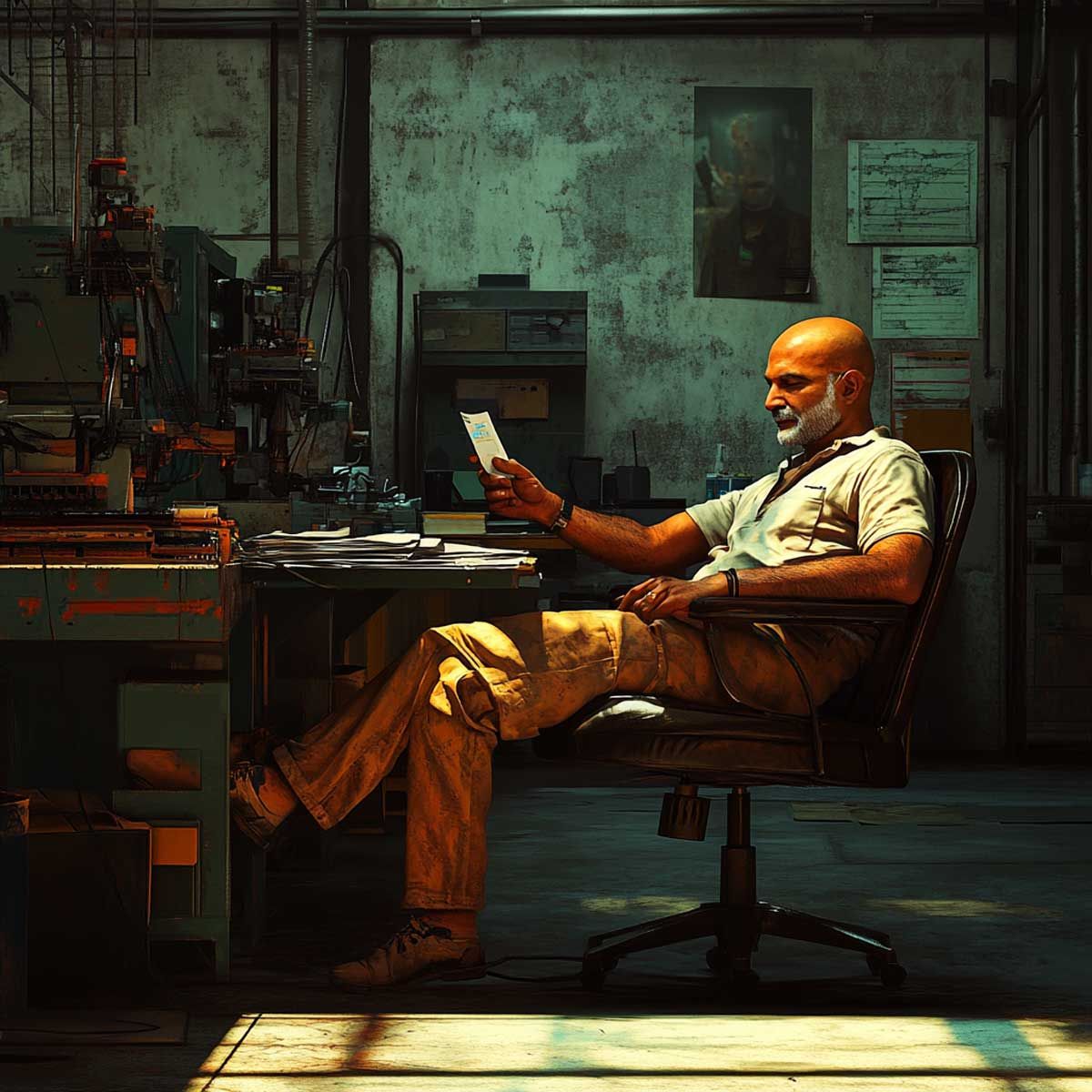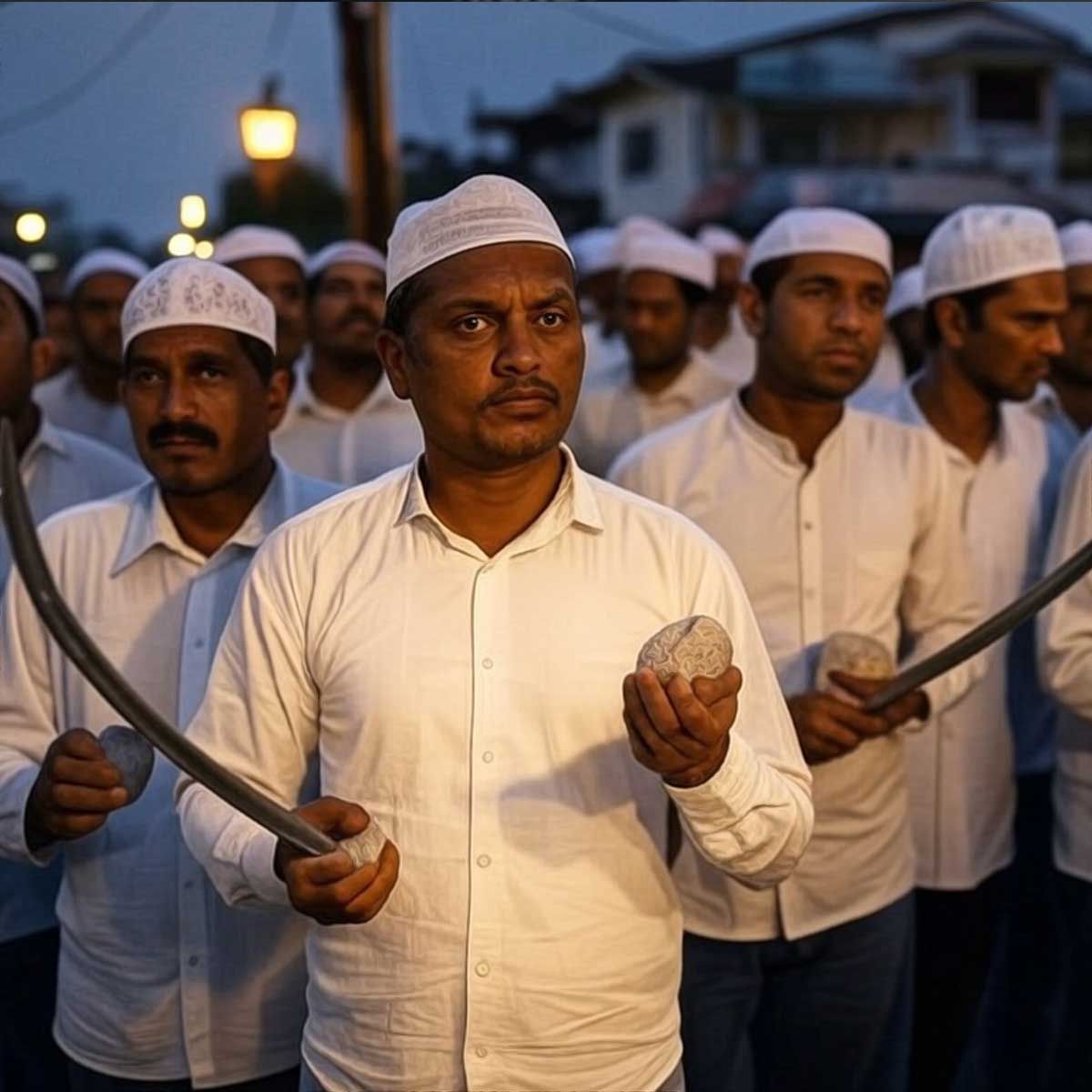More Coverage
Twitter Coverage
Satyaagrah
Written on
Satyaagrah
Written on
Satyaagrah
Written on
Satyaagrah
Written on
Satyaagrah
Written on
JOIN SATYAAGRAH SOCIAL MEDIA
"महामहिम": From President Murmu's inaugural address in the new Parliament, India's leap to 188 GW renewable energy, to the iconic Sengol symbolizing power transfer—witness a nation on the move towards Shreshth Bharat, sustainability & historic milestones
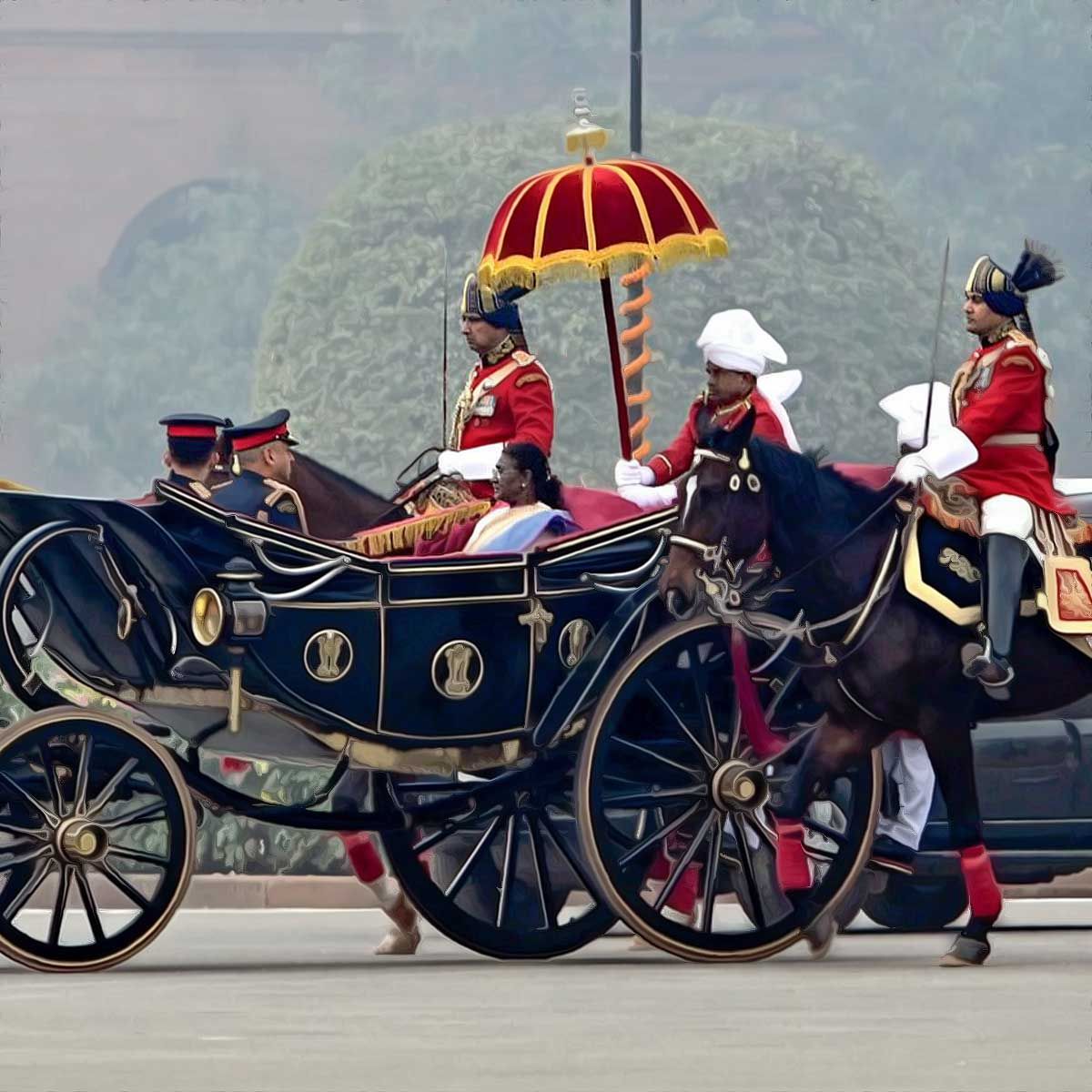
In a day marked by ceremonial grandeur and historic firsts, the Budget Session of the Parliament commenced this January 31. The spotlight was on President Draupadi Murmu as she made her inaugural address to the members of both the Lok Sabha and Rajya Sabha in the newly inaugurated Parliament building.
|
This significant occasion was further highlighted by a novel and dignified ceremony as President Murmu received a majestic welcome orchestrated by Lok Sabha Speaker Om Birla. The centerpiece of this welcome was the Sengol, a revered cultural icon symbolizing the authority of the Government of India.
The day's proceedings began with President Murmu departing from Rashtrapati Bhavan, escorted by a splendid procession led by the President’s Bodyguards. This elite cavalry regiment of the Indian Army is known for its valor and distinctive ceremonial role. Concurrently, the Sengol, emblematic of the governance of India, was ceremoniously moved from its place in the Lok Sabha to the main entrance hall. This act was to honor the President's arrival with the profound respect and tradition it merited.
Upon her arrival, President Murmu, alongside notable figures such as Lok Sabha Speaker Om Birla, Rajya Sabha Speaker and Vice President Jagdeep Dhankhar, and followed by Prime Minister Narendra Modi, was officially greeted with the Sengol. This was complemented by the melody of bands playing in her honor, encapsulating a moment of national pride and cultural heritage.
|
'New Parl Building Has Fragrance Of Shrestha Bharat,' Says President Droupadi Murmu
As the Budget Session of Parliament unfolds, President Droupadi Murmu took the stage, addressing a joint session of the Lok Sabha and Rajya Sabha, marking a pivotal moment in the nation's legislative calendar.
In her speech, President Murmu eloquently stated, "This is my first address in the new Parliament building. This grand building has been built at the beginning of the Amrit Kaal. This has the fragrance of 'Ek Bharat, Shreshth Bharat'...This also has the resolve to honor democratic and parliamentary traditions. Besides this, it also has the resolve to build new traditions of the new India of the 21st century. I am confident that there will be meaningful conversation on policies, in this new building."
Continuing her address, the President reflected on the country's journey towards alleviating poverty, "The achievements that we see today are the extension of the practices of the last 10 years. We heard the slogan of 'Gareebi Hatao' since our childhood. Today, for the first time in our lives, we see poverty being alleviated on a large scale."
President Murmu further outlined the foundational pillars envisioned by her government for a developed India, stating, "My Government believes that the grand edifice of a developed India will stand on four strong pillars – youth power, women power, farmers, and the poor."
Moreover, she touched upon long-awaited achievements that have now been realized, "(People were) hopeful of the construction of Ram Temple (in Ayodhya) for centuries and that dream has been fulfilled now. (People also) wanted the abrogation of Article 370 from Jammu and Kashmir. Now, Article 370 is also history," signifying the fulfillment of significant cultural and political aspirations.
President Murmu lauded the pivotal decisions made by the Central Government, "In the last 10 years, India has seen the completion of many such works in the national interest for which people were waiting for decades. 'Make in India' and 'Aatmanirbhar Bharat' have become our strengths."
|
'India's Renewable Energy Capacity Has Reached 188 GW': President Murmu
President Murmu proudly announced, "Last year, the country achieved great height. Despite the challenges, the country achieved the highest growth rate. India become the first country to reach the southern pole of Moon. The country successfully organized the G20. India won more than 100 medals in Asian Games. India also got the Atal Tunnel." These accomplishments span various fields, showcasing India's advancements in space exploration, international diplomacy, sports, and infrastructure development.
Emphasizing the nation's focus on self-reliance and industrial growth, the President noted, "'Make in India' and 'Aatmanirbhar Bharat' have become our strengths." She also highlighted a significant milestone in defense, "defence production crossing the Rs 1 lakh crore mark."
A major highlight of her speech was India's impressive growth in renewable energy capacity. "India’s installed renewable energy (RE) capacity has increased to about 188 gigawatts (GW), up from 81 GW a decade ago," President Murmu stated, underscoring the country's commitment to sustainable development. She elaborated on the remarkable expansion in the sector, "while solar power capacity has increased 26-fold, wind power capacity has doubled in the last 10 years."
The President further shared India's standing on the global stage concerning renewable energy, "the India currently ranks fourth globally in terms of renewable energy and wind power installed capacity and fifth in solar power capacity."
Reflecting on the international commitments made by India, President Murmu recalled the ambitious "Panchamrit" pledge announced at the COP26 Climate Conference in Glasgow in 2021. These commitments are aimed at a sustainable future, including "attaining 500 GW of non-fossil electricity capacity by 2030, meeting 50 per cent of its energy from 'renewable energy' by 2030, and reducing total projected carbon emissions by one billion tonnes by 2030."
|
Highlighting India's environmental initiatives, President Murmu outlined the country's strategy to significantly reduce its carbon footprint. She stated, "Furthermore, India aims to slash the emissions intensity of its gross domestic product by 45 per cent. Also, by the year 2070, the country envisions achieving the target of 'Net Zero,' where the net carbon dioxide emissions from energy sources would be zero."
On the renewable energy front, President Murmu shared progress on enhancing solar energy capacity. "During her address, she highlighted the construction of 11 new solar parks along with the ongoing development on nine additional parks," emphasizing the nation's focus on boosting its solar energy infrastructure. Moreover, she announced a significant initiative, "the government's recent announcement of the Pradhanmantri Suryodaya Yojana, which aims to install solar panels on the rooftops of one crore households." This initiative is a testament to India's dedication to expanding its renewable energy footprint and making sustainable energy accessible to its citizens.
Reflecting on the cultural and democratic significance of the new Parliament building, President Murmu remarked, "The new Parliament building has the fragrance of 'Shrestha Bharat' and reflects the glory of India's culture and civilization." Her words echo the essence of India's pride in its historical achievements and cultural depth. She further added, "This has the pledge to respect our democratic and parliamentary traditions," highlighting the building as a symbol of India's commitment to its democratic values and heritage.
With the current session being the last before the Lok Sabha polls expected in April-May, a tight schedule has been set, providing "a total of eight sittings spread over a period of 10 days." The anticipation builds as Finance Minister Nirmala Sitharaman is slated to present the interim budget on February 1, marking a crucial moment for the nation's economic planning.
|
The Sengol: A Symbol of Sovereignty and Tradition
In a gesture steeped in historical significance and cultural heritage, the Sengol, a powerful emblem of India's governance and sovereignty, has reclaimed its place in the annals of Indian democracy. This traditional symbol, which traces its roots back to the historic moment of India's independence, carries with it stories of India's past and visions for its future.
The Sengol is not merely an artifact; it is a testament to the momentous occasion when India's first Prime Minister, Jawaharlal Nehru, accepted it at his residence on the night of August 14, symbolizing the transfer of power. Crafted in Tamil Nadu, the Sengol embodies the rule of the Indian government and the sovereignty of the Indian Republic, weaving together the rich tapestry of India's diverse cultures and its unwavering spirit of independence.
For years, this historic symbol was kept away from public view, residing in a museum in Prayagraj under the misnomer ‘Nehru’s walking stick’. However, its story took a pivotal turn in May last year when Prime Minister Narendra Modi restored the Sengol to its deserved prominence. In a ceremony enriched with ancient Hindu rituals, saints, and priests invoked blessings upon the Sengol with sacred mantras and hymns, marking its installation in the Lok Sabha beside the Speaker’s chair.
This act of reinstating the Sengol in the heart of India's parliamentary proceedings is more than a nod to tradition. It symbolizes a recognition of India's deep-rooted cultural values and the enduring principles of democracy and sovereignty that guide the nation. By placing the Sengol beside the Speaker’s chair, PM Modi has not only honored the legacy of India's journey to independence but also underscored the continuing relevance of its cultural heritage in shaping the governance of the modern Indian Republic.
As the Sengol stands in the Lok Sabha, it serves as a constant reminder of India's historical milestones and the timeless values that continue to steer the country's path towards a future of progress and unity.
 Support Us
Support Us
Satyagraha was born from the heart of our land, with an undying aim to unveil the true essence of Bharat. It seeks to illuminate the hidden tales of our valiant freedom fighters and the rich chronicles that haven't yet sung their complete melody in the mainstream.
While platforms like NDTV and 'The Wire' effortlessly garner funds under the banner of safeguarding democracy, we at Satyagraha walk a different path. Our strength and resonance come from you. In this journey to weave a stronger Bharat, every little contribution amplifies our voice. Let's come together, contribute as you can, and champion the true spirit of our nation.
 |  |  |
| ICICI Bank of Satyaagrah | Razorpay Bank of Satyaagrah | PayPal Bank of Satyaagrah - For International Payments |
If all above doesn't work, then try the LINK below:
Please share the article on other platforms
DISCLAIMER: The author is solely responsible for the views expressed in this article. The author carries the responsibility for citing and/or licensing of images utilized within the text. The website also frequently uses non-commercial images for representational purposes only in line with the article. We are not responsible for the authenticity of such images. If some images have a copyright issue, we request the person/entity to contact us at This email address is being protected from spambots. You need JavaScript enabled to view it. and we will take the necessary actions to resolve the issue.
Related Articles
- "We are not makers of history. We are made by history": Unveiling the Enigmatic Majesty - While the Sengol stole the limelight at inauguration, there is another astounding installation - Facoult's Pendulum dancing in Hallowed Halls of the new Parliament
- “I believe J&K is passing through a critical juncture. I have a lot more active politics ahead of me in service of J&K and country”: National Conference head Farooq Abdullah withdraws his name as ‘unified’ opposition’s Presidential candidate
- 'Bete ko set karna hai, damad ko bhent': BJP MP Nishikant Dubey takes jibe at Sonia Gandhi while locking horns with Congress, shedding light on political tensions, Supreme Court decisions, and emerging narratives in the Indian Parliament's monsoon session
- "गुंडन से गुंडई, चिन्हलिस हई रे": In an unexpected parliamentary twist, 11 MPs transform into action stars, heroically plucking hair, hurling shoes, and landing punches to subdue an intruder in the Lok Sabha, showcasing unity in the most dramatic way!
- "Poor thing": Sonia Gandhi's remark that President Murmu was 'tired' sparked outrage; BJP demanded apology, while PM Modi praised Murmu's vision with self-reliant defence, Kashmir-Kanyakumari rail, and a 1,000 km metro milestone
- "Critical Hour Approaches": BJP Rajya Sabha MP Harnath Singh Yadav has proposed a bill to repeal the Waqf Act of 1995 brought in by Congress, the introduction of the bill was approved after 53 members voted in favour while 32 opposed the move
- “Jai Bhim, Manipur ko Insaf do”: On the 2001 Parliament attack anniversary, a shocking breach occurs as two men vault into the Lok Sabha from the visitors' gallery, releasing a cloud of yellow smoke and sending shockwaves through Parliament, detained
- "Kaun Banega Rashtrapati - Voting to elect 15th President of India begins": Over 4800 MPs-MLAs to cast votes, NDA candidate Droupadi Murmu has clear edge over Opposition nominee Yashwant Sinha as 60% votes expected to be polled in her favour
- "Enough is enough:" President Murmu declares on the Kolkata doctor's rape-murder case, asking, "Where have we erred? And what can we do to remove the errors?" as she demands urgent reforms to protect women and end societal indifference
- Amid fervent anticipation, the special session is slated to kickstart on Sep 18th, and the very next day it will transition to the brand-new Parliament, accentuated by the divine blessings of Ganesh Chaturthi, a momentous event eagerly reported nationwide
- "In all chaos there is a cosmos, in all disorder a secret order": The Symphony of Governance, Architectural Marvel and Divine Geometry: Prime Minister Modi inaugurates the Sri Yantra-Inspired Majestic New Parliament amid chants of shlokas & sacred mantras
- "Gone and Back in 35 Minutes": Derek O'Brien's flair for drama got him suspended from Rajya Sabha for some time, between comparing leaders to washing machines and defying the Speaker, O'Brien ensures the Parliament's spotlight remains firmly on him
- "If saving money is wrong, I don't want to be right!": Central Vista to save the govt around Rs 1000 crore per annum in rent and other associated costs, still faced opposition from political parties, environmental activists and civil society organizations
- "Symbols are powerful because they are the visible signs of invisible realities": ‘Sengol’ representing fair & equitable governance will shine in the new Parliament as a national symbol of Amrit Kaal, an era of India taking its rightful place in the world
- Pratibha Patil, first woman President of India and a Sonia Gandhi aide, from her jet-set foreign trips with family entourages to personal possession of diplomatically exchanged gifts, always reflected an aristocratic demeanour during her presidency

